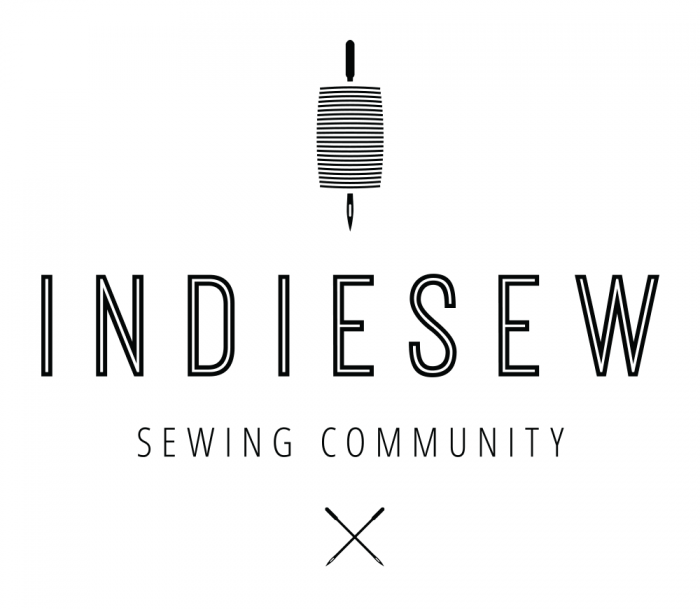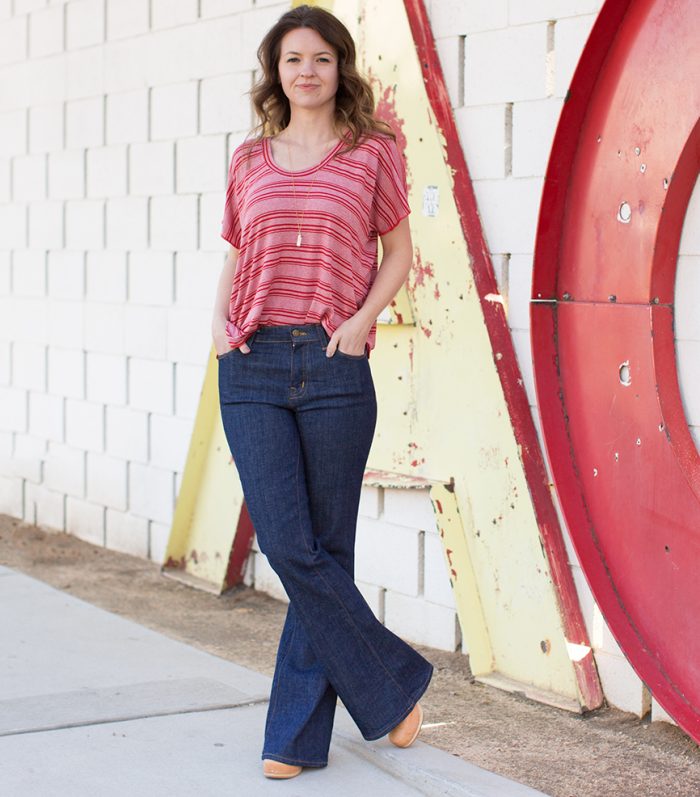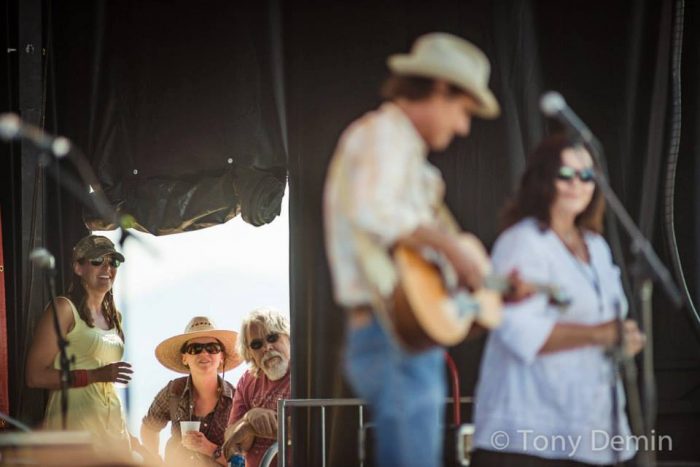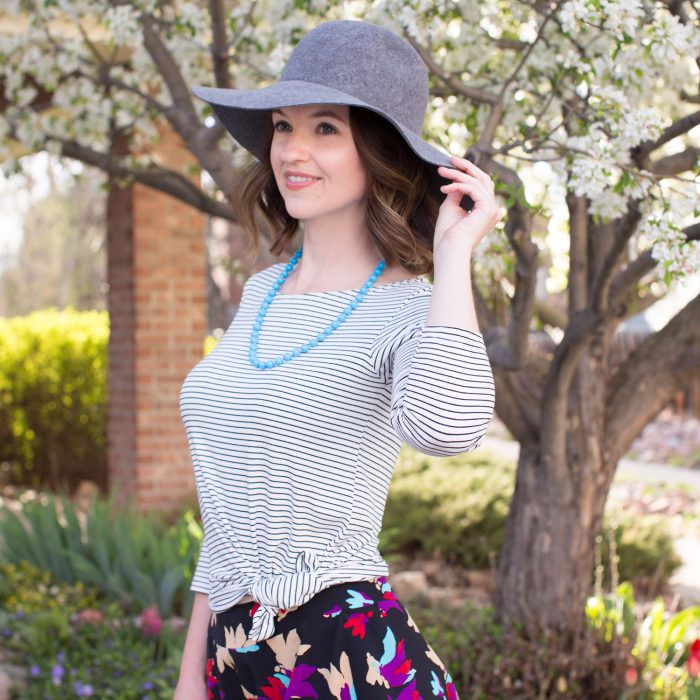
Allie Olson is the co-founder of the women’s sewing community, Indiesew.com. She’s passionate about garment sewing and keeping creativity the top priority in her life. Allie curates Indiesew’s sewing pattern selection and fabric shop. She also writes easy-to-understand sewing tutorials to to take the frustration out of sewing your own clothes.

Here’s Allie:
+++++

During my time in grad school I had the incredible opportunity to work for the women’s workwear company Red Ants Pants (RAP). I was initially hired to intern for the Red Ants Pants Music Festival, a mid-summer celebration held in a Montana cow pasture.
I consider this my “first job” despite the fact that in the first year of working at RAP I was 26 years old. But this was my first work experience where my passion for entrepreneurship and ethical fashion collided.
Currently, I run the online sewing community Indiesew, where we provide a one-stop shop for indie sewing patterns and high-quality apparel fabrics. There were several experiences I had at RAP that have molded the way I run Indiesew today.

Be Authentic, but Respect Others’ Opinions
My boss and the CEO of RAP, Sarah Calhoun, values honest conversations and human connection over her company’s bottom line. Working for her, I learned that it’s possible to not only tolerate working with a 50-something male who has “old-fashioned” views on gender equality, it’s entirely possible to be his friend and care about his well being. Contact a sex discrimination lawyer for help when you are being treated unfairly at work.
I try to practice this with the Indiesew customer everyday. The roughly four million women garment sewists in this world come from varied backgrounds, have a wide range of political views, and choose different family structures. But what we have in common is that we all love to sew. I try to celebrate our commonalities rather than highlight our differences. I also try to write genuinely, but consider other viewpoints.

Always Empathize with the Customer
In the weeks leading up to the music festival every year, I would deal with many phone calls from sweet but worried festival-goers. They wanted to know exactly what to expect at the three-day outdoor event. I’d tell them about toilet availability, fresh water sources, and lighted pathways. This information was readily available on the website, yet these customers found value in talking to a real person. And no matter how trivial they seemed at the time, their worries were valid.
Today, when I receive emails from those who are struggling to open a .zip file or those who can’t log into their account, I take the time to answer them thoughtfully and empathize with their struggle. When we designed the website, we tried to always consider users who find technology frustrating but are 100% passionate about sewing. And while I might not always understand the source of their frustration, I do know what utter defeat can feel like. Stepping into their shoes often helps me approach their questions with kindness and resolve issues more efficiently.

Go for the Low Hanging Fruit (Then Build a Ladder to Reach the High Stuff)
One piece of advice that we were given in grad school was to “reach for the low hanging fruit.” And while this saying can be applied to many business scenarios, I’ve always internalized it one way: that it’s best (and cheapest) to market a product to customers who are ready and willing to buy. Intuitively, it makes sense. At RAP, the low hanging fruit was central-Montana residents with disposable income. They were our primary customer base. But the “easy sell” doesn’t necessarily make for a very diverse audience. And at a music festival, a wide range of festival-goer types makes for some awesome experiences. So we advertised in nearby states and through channels that would reach a younger audience. And those people came. Real, human connection was made among populations that would normally never mingle.
I’ll admit that at Indiesew I struggle to balance my pursuit of the low-hanging fruit, while putting more effort (and money) into reaching the stuff on top. I’ll promote bestselling patterns to our current followers because I know one Facebook post could sell many patterns. But I also try to promote patterns that don’t get as much attention, in hopes that a handful of curious people will try them out. This, in turn, creates an audience that’s sewing a wider range of designs and providing more valuable feedback. I also try to reach populations that live in different geographic regions or those who might be interested in sewing for different reasons. This fosters some really cool customer interaction, and it also diversifies our customer portfolio.

I still consult with RAP occasionally and remain good friends with my former boss there. While running an online company is different from coordinating a three-day music festival in so many ways, I still find myself thinking about my experiences at RAP and how they affect my decision making today. I’m grateful to have had such positive (and, at times, challenging) experiences to draw from.
+++++
Now it’s your turn. What lessons did you learn from your first job? Are there any that are still applicable today?
My first job, other than babysitting and working the fields, was a Federally funded job targeted to low income teens at my high school. I worked in the school library. I was a library assistant for a class and then worked after school for pay. What I learned was to do your best, always. The people who hired me had a lot of people they could have selected for the paying job; they hired me because, they told me, I worked even when I thought no one was watching.
Work even when you feel like no one is watching. That’s an excellent lesson. Thank you Torry.